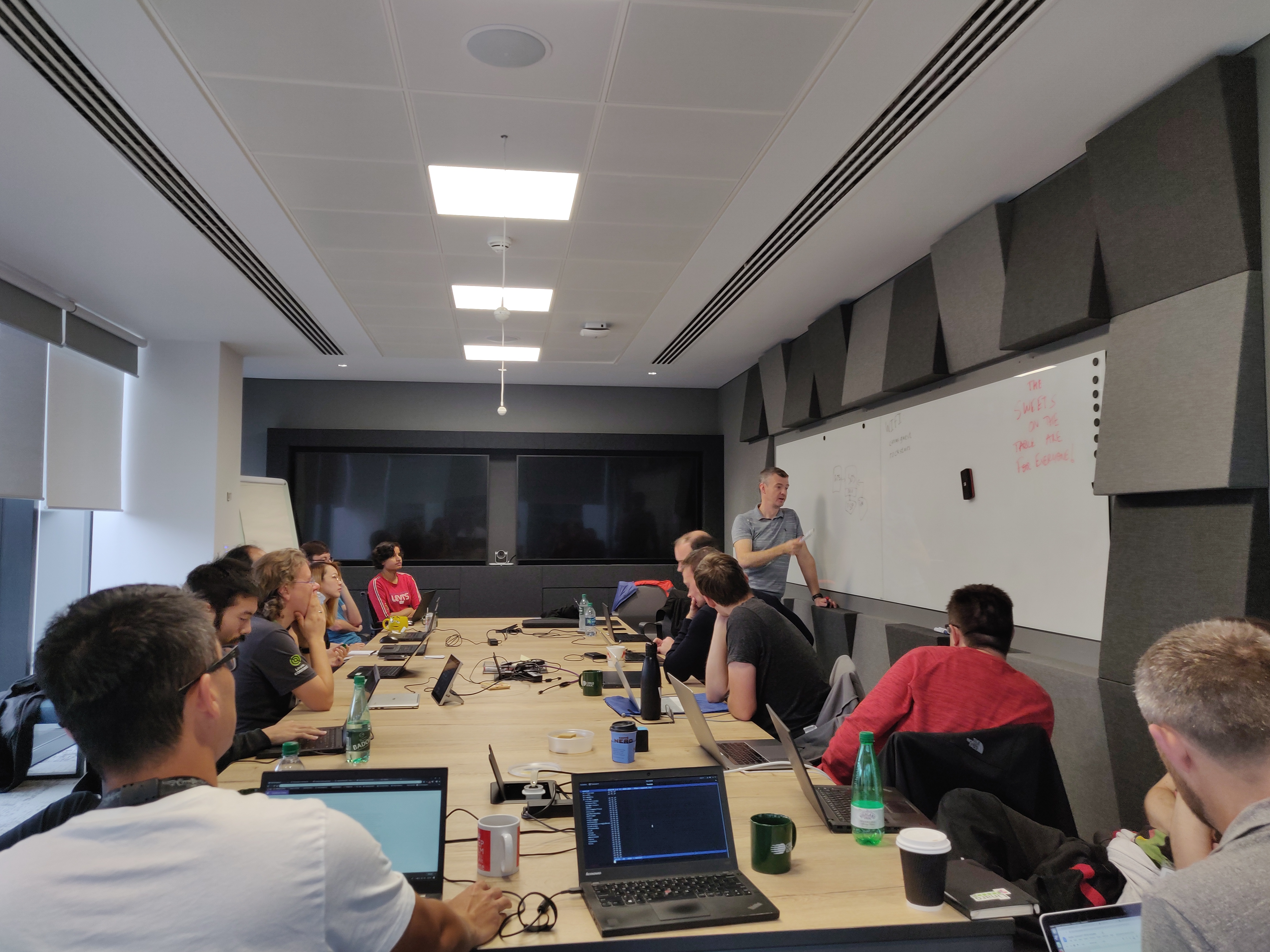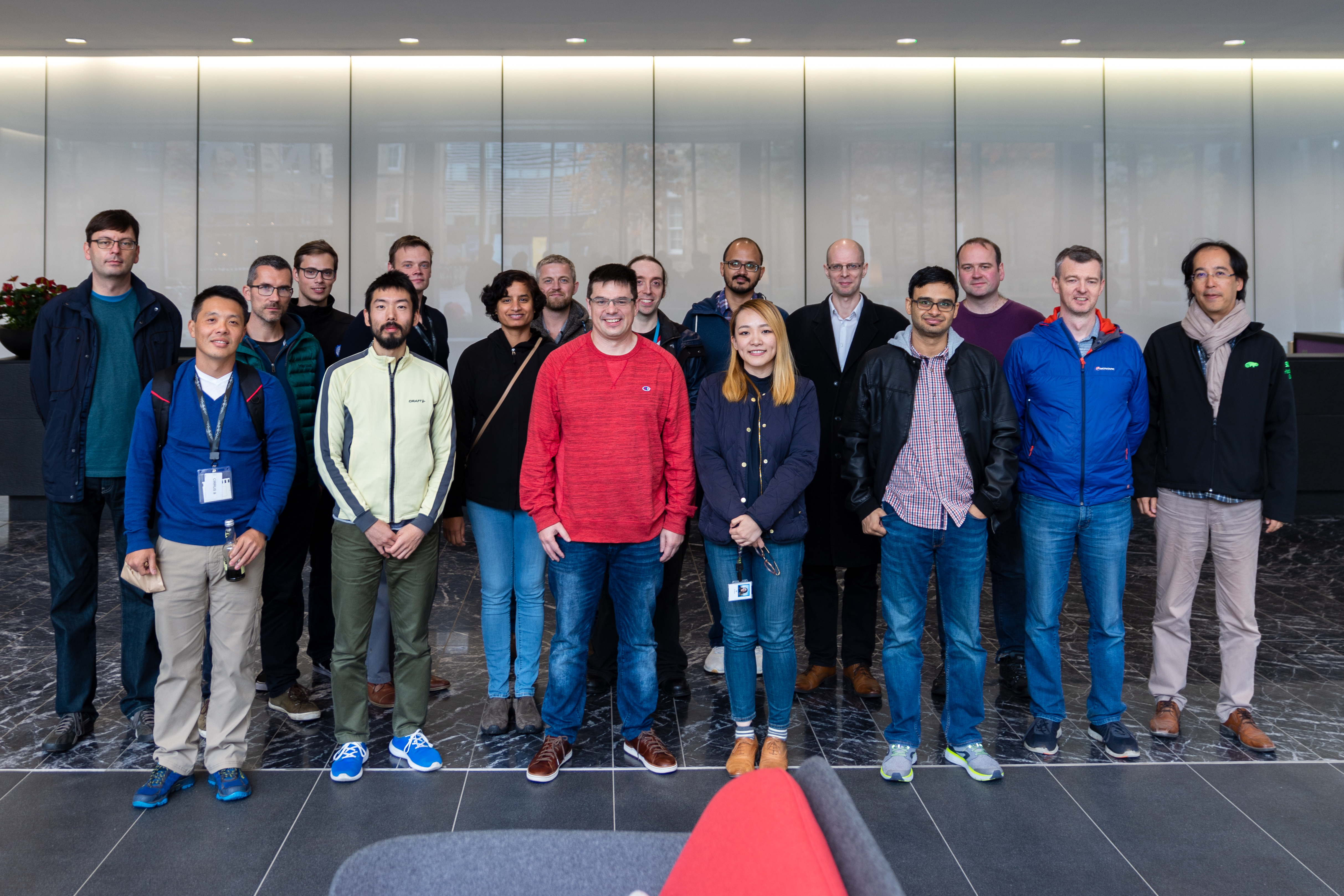Linux Audio Miniconf 2018 report
The audio miniconference was held on the 21st in the offices of Cirrus Logic in Edinburgh with 15 attendees from across the industry including userspace and kernel developers, with people from several OS vendors and a range of silicon companies.
Community
We started off with a discussion of community governance lead by Takashi Iwai. We decided that for the ALSA-hosted projects we’ll follow the kernel and adopt the modified version of the contributor covenant that they have adopted, Sound Open Firmware already has a code. We also talked a bit about moving to use some modern hosted git with web based reviews. While this is not feasible for the kernel components we decided to look at doing this for the userspace components, Takashi will start a discussion on alsa-devel. Speaking of the lists Vinod Koul also volunteered to work with the Linux Foundation admin team to get them integrated with lore.kernel.org.

Kernel
Liam Girdwood then kicked off the first technical discussion of the day, covering virtualization. Intel have a new hypervisor called ACRN which they are using as part of a solution to expose individual PCMs from their DSPs to virtual clients, they have a virtio specification for control. There were a number of concerns about the current solution being rather specific to both the hardware and use case they are looking at, we need to review that this can work on architectures that aren’t cache coherent or systems where rather than exposing a DSP the host system is using a sound server.
We then moved on to AVB, several vendors have hardware implementations already but it seems clear that these have been built by teams who are not familiar with audio hardware, hopefully this will improve in future but for now there are some regrettable real time requirements. Sakamoto-san suggested looking at FireWire which has some similar things going on with timestamps being associated with the audio stream.
For SoundWire, basic functionality for x86 systems is now 90% there – we still need support for multiple CPU DAIs in the ASoC core (which is in review on the lists) and the Intel DSP drivers need to plumb in the code to instantiate the drivers.
We also covered testing, there may be some progress here this year as Intel have a new hypervisor called ACRN and some out of tree QEMU models for some of their newer systems both of which will help with the perennial problem that we need hardware for a lot of the testing we want to do. We also reviewed the status with some other recurring issues, including PCM granularity and timestamping, for PCM granularity Takashi Iwai will make some proposals on the list and for timestamping Intel will make sure that the rest of their driver changes for this are upstreamed. For dimen we agreed that Sakamoto-san’s work is pretty much done and we just need some comments in the header, and that his control refactoring was a good idea. There was discussion of user defined card elements, there were no concerns with raising the number of user defined elements that can be created but some fixes needed for cleanup of user defined card elements when applications close. The compressed audio userspace is also getting some development with the focus on making things easier to test, integrating with ffmpeg to give something that’s easier for user to work with.
Charles Keepax covered his work on rate domains (which we decided should really be much more generic than just covering sample rates), he’d posted some patches on the list earlier in the week and gave a short presentation about his plans which sparked quite a bit of discussion. His ideas are very much in line with what we’ve discussed before in this area but there’s still some debate as to how we configure the domains – the userspace interface is of course still there but how we determine which settings to use once we pass through something that can do conversions is less clear. The two main options are that the converters can expose configuration to userspace or that we can set constraints on other widgets in the card graph and then configure converters automatically when joining domains. No firm conclusion was reached, and since substantial implementation will be required it is not yet clear what will prove most sensible in practical systems.
Userspace
Sakamoto-san also introduced some discussion of new language bindings. He has been working on a new library designed for use with GObject introspection which people were very interested in, especially with the discussion of testing – having something like this would simplify a lot of the boilerplate that is involved in using the C API and allow people to work in a wider variety of languages without needing to define specific bindings or use the individual language’s C adaptations. People also mentioned the Rust bindings that David Henningsson had been working on, they were particularly interesting for the ChromeOS team as they have been adopting Rust in their userspace.
We talked a bit about higher level userspace software too. PulseAudio development has been relatively quiet recently, Arun talked briefly about his work on native compressed audio support and we discussed if PulseAudio would be able to take advantage of the new timestamping features added by Pierre-Louis Bossart. There’s also the new PipeWire sound server stack, this is a new stack which was originally written for video but now also has some audio support. The goal is to address architectural limitations in the existing JACK and PulseAudio stacks, offering the ability to achieve low latencies in a stack which is more usable for general purpose applications than JACK is.
DSPs
Discussions of DSP related issues were dominated by Sound Open Firmware which is continuing to progress well and now has some adoption outside Intel. Liam gave an overview of the status there and polled interest from the DSP vendors who were present. We talked about how to manage additions to the topology ABI for new Sound Open Firmware features including support for loading and unloading pieces of the DSP topology separately when dynamically adding to the DSP graph at runtime, making things far more flexible. The issues around downloading coefficient data were also covered, the discussion converged on the idea of adding something to hwdep and extending alsa-lib and tinyalsa to make this appear integrated with the standard control API. This isn’t ideal but it seems unlikely that anything will be. Techniques for handling long sequences of RPC calls to DSPs efficiently were also discussed, the conclusion was that the simplest thing was just to send commands asynchronously and then roll everything back if there are any errors.
Summary
Thanks again to all the attendees for their time and contributions and to Cirrus Logic for their generosity in hosting this in their Edinburgh office. It was really exciting to see all the active development that’s going on these days, it’ll be great to see some of that bear fruit over the next year!
